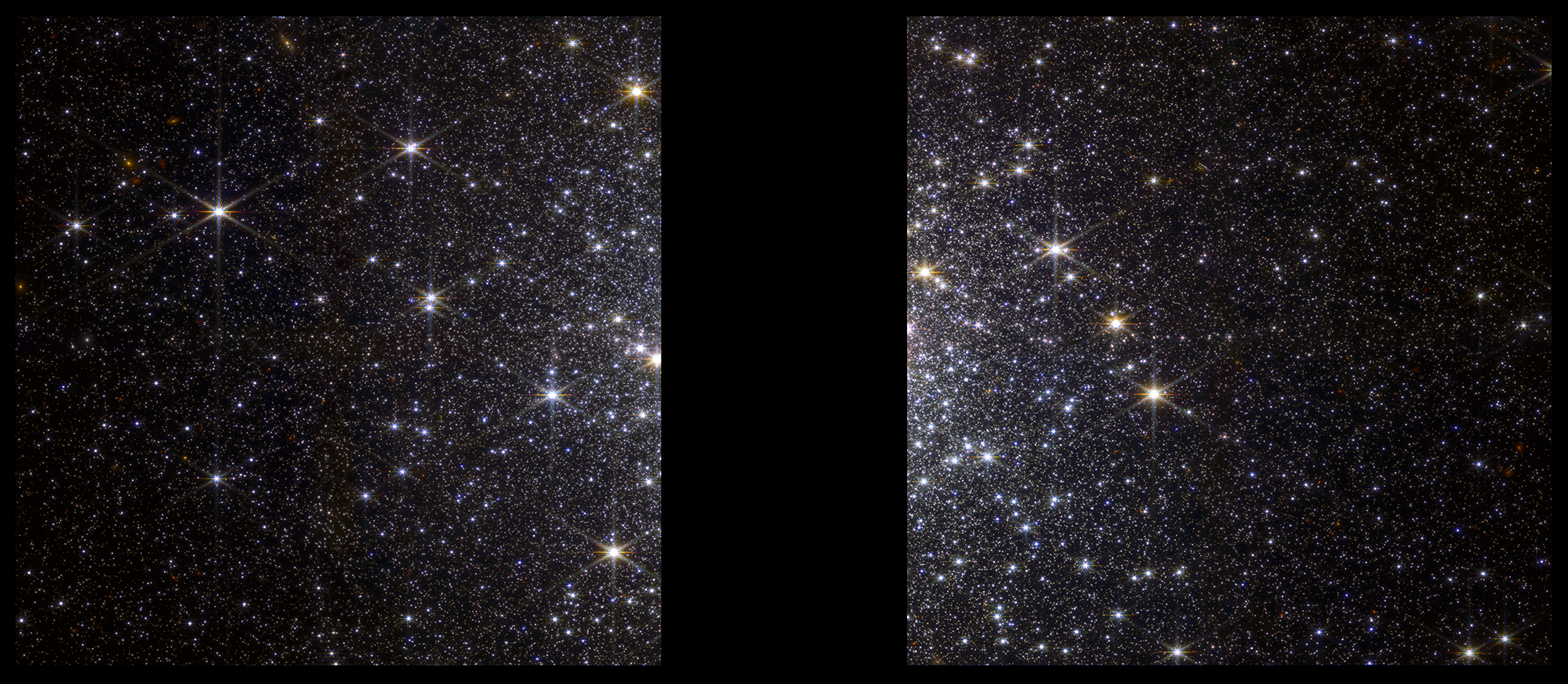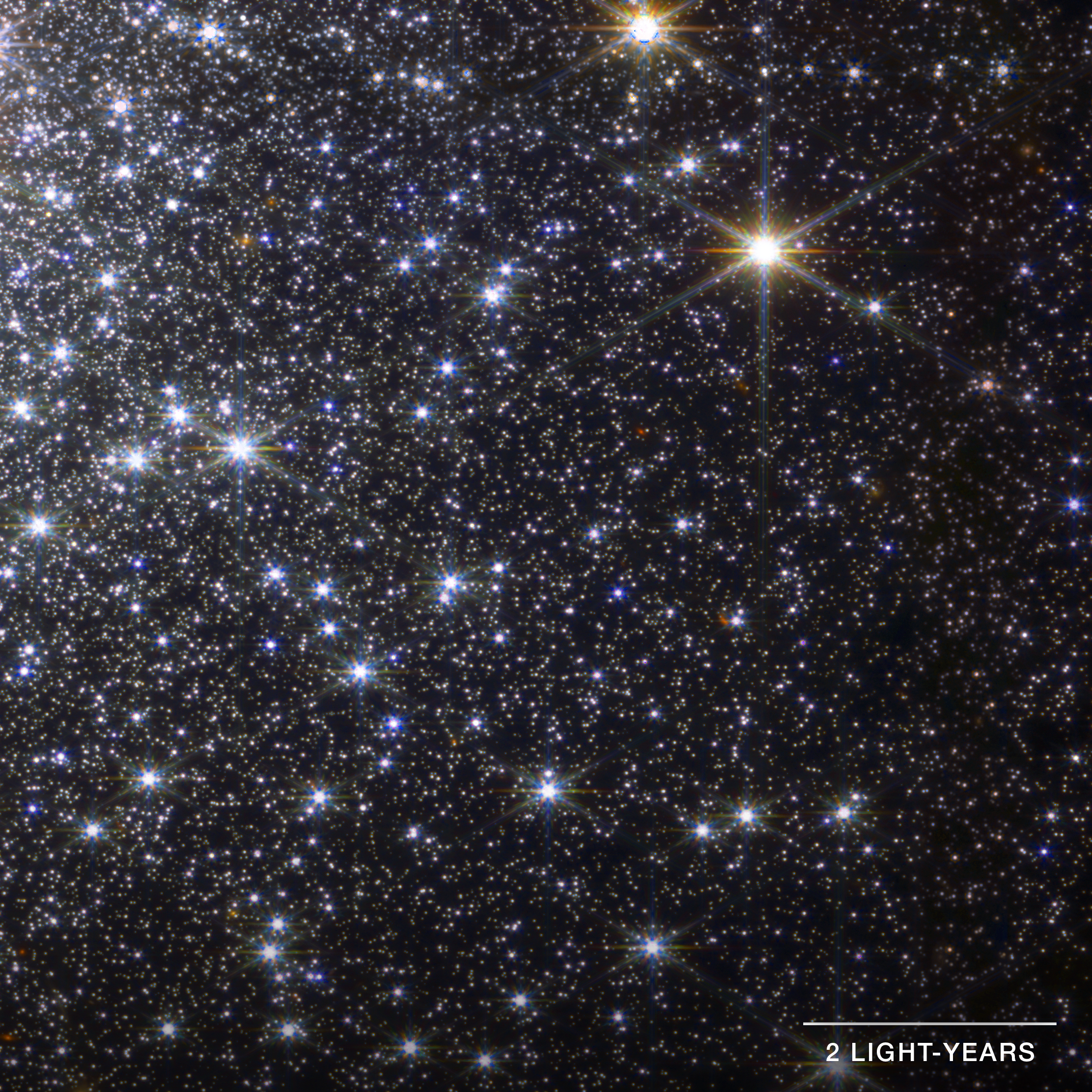James Webb Space Telescope reveals packed stars in Milky Way's oldest cluster (photos)
Creatures living on a planet inside the M92 star cluster would see a night sky illuminated by stars thousands of times brighter than those we see from Earth.

The James Webb Space Telescope has peered inside one of the oldest star clusters of our Milky Way galaxy, revealing a region of our galactic halo teeming with brilliant stars.
The James Webb Space Telescope observed the Messier 92 globular cluster, also known as M92, early after coming online last summer. It took only one hour to capture the sparkling image above, according to a statement by the Space Telescope Science Institute, which operates the observatory and released the image on Feb. 22.
Primarily built to study the most distant objects in the far-away reaches of the universe, Webb easily detected the multitude of stars inhabiting the M92 cluster some 27,000 light-years away, including the dim and cool ones that were invisible to its predecessor, the Hubble Space Telescope. Some of the stars in this image are tiny, only 0.1 the mass of our sun, Roger Cohen, an astronomer at Rutgers University and one of the scientists behind the observations, said in the statement.
Related: NASA's James Webb Space Telescope: The ultimate guide
"This is very close to the boundary where stars stop being stars," Cohen said. "Below this boundary are brown dwarfs, which are so low-mass that they're not able to ignite hydrogen in their cores."
The image, captured by Webb's Near Infrared Camera (NIRCam), reveals only a small portion of the M92 cluster. The entire cluster is about 100 light-years wide and is teeming with 300,000 stars. If an inhabited planet like Earth were to orbit one of those stars, the creatures on its surface would have a magnificent view of the night sky, which would shine with thousands of stars that would be thousands of times brighter than those humans can see from Earth.
M92 is one of the oldest globular clusters in the Milky Way, consisting of stars that formed 12 to 13 billion years ago, when the universe was only hundreds of millions years old.
Get the Space.com Newsletter
Breaking space news, the latest updates on rocket launches, skywatching events and more!

"It contains some of the oldest stars that we can find, or at least that we can resolve and characterize well," said astronomer Matteo Correnti of the Italian Space Agency, who helped analyze the data, in the statement.
By studying ancient clusters such as M92, astronomers can gain important insights into the history of not only our Milky Way galaxy, but the entire universe.
"Globular clusters like M92 are very important for our understanding of stellar evolution," astronomer Alessandro Savino of the University of California, another member of the Webb science team, said in the statement. "For decades they have been a primary benchmark for understanding how stars work, how stars evolve. M92 is a classic globular cluster. It's close by; we understand it relatively well; it's one of our references in studies of stellar evolution and stellar systems."
Most of the stars in the cluster have formed at about the same time and contain the same chemical elements. Some of these stars, however, are more massive than others, and Webb can help better describe the entire population.
Follow Tereza Pultarova on Twitter @TerezaPultarova. Follow us on Twitter @Spacedotcom and on Facebook.
Join our Space Forums to keep talking space on the latest missions, night sky and more! And if you have a news tip, correction or comment, let us know at: community@space.com.

Tereza is a London-based science and technology journalist, aspiring fiction writer and amateur gymnast. Originally from Prague, the Czech Republic, she spent the first seven years of her career working as a reporter, script-writer and presenter for various TV programmes of the Czech Public Service Television. She later took a career break to pursue further education and added a Master's in Science from the International Space University, France, to her Bachelor's in Journalism and Master's in Cultural Anthropology from Prague's Charles University. She worked as a reporter at the Engineering and Technology magazine, freelanced for a range of publications including Live Science, Space.com, Professional Engineering, Via Satellite and Space News and served as a maternity cover science editor at the European Space Agency.









